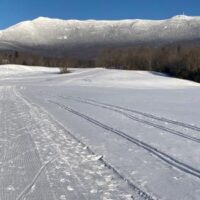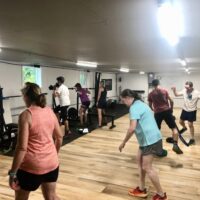When I was in 8th grade a book came out called HAWK – Occupation: Skateboarder. I just double-checked my facts on Amazon and the year of publication was 2004, my final year of middle school.
the year of publication was 2004, my final year of middle school.
Given the popularity of extreme sports in the edgy 90’s and early aughts, plus the monopoly Tony Hawk’s Pro Skater had on video games at the time, this book was the prime choice for “free reading” time in English class.
The title is a reference to the fact that skateboarding went from being a hobby for delinquent youths, all the way to a legitimate career and profession. I wouldn’t call Nordic skiing a hobby for delinquent youths; I’d say it’s quite the opposite, but I don’t want to generalize. Still, I was reminded of this book a few times this past week in ways that are worth sharing.
We’ve seen a pretty interesting progression already in the Junior squad this season, from the end of the season in March to where we are now, the early stages of June. With a successful season, a lot of energy was pent-up and just waiting for the start of regular training. The mentality was one of “more = better” which isn’t always the best way to approach endurance sport, especially in April and May when the racing season is 9 months away. I did a lot of head-shaking reading through Strava posts of silly rollerskis in April, overambitious runs in May, and predictable (but no less of a bummer) overuse injuries from track runners in June.
It has been a coaching challenge to channel and direct the flow of energy into the right places, modes, and mentalities. This is a process that probably never ends, even for the top athletes in the entire sport, but we’re improving. What has been a huge positive is the way this group of Juniors has become invested in the sport from a learning perspective. More than anything, these athletes identify as skiers and not just kids participating in a sport. I now answer questions at practice like:
- “If I’m training this many hours in this year, and Klaebo is training so many more, what is the progression like to get there?”
- “Generally, do you think I’m getting enough protein? Do you know how I can find more info on that?”
- “I’ve got this work commitment on Thursday, so I can’t make practice. What’s a good alternative to do?”
Maybe not everyone is at Occupation: Skier levels right now (nor should they be), but a different kind of engagement with the sport is definitely appearing among many in this group.

Classic skiing with special guest Aidan Burt of UVM (oh, and of course MNC!)
I was really impressed over the past week/weekend with the communication between team members, a few of whom organized training together when there was no official practice scheduled. Emma got to experience her first trip to the shores of Shelburne when Anders helped organize a ski down that way. After practice on Saturday morning, a group collaborated to find the best way to carpool over to the State track meet in Burlington to watch their MNC teammates compete. And Sunday there were all sorts of skis and bike rides happening in small groups across our chunk of Vermont.

Yes, rollerskiing in Vermont is awesome!
And my final example of the level these skiers are operating at comes from a Zoom call with some collegiate coaches earlier in the week. We were discussing some recruiting and training, and I was asked if I had any questions. I asked what some of the workouts/technical/fitness aspects of college teams were that coaches felt incoming skiers were lacking experience and skill in. I want to make sure our athletes are able to jump right into college programs and succeed in achieving their goals without having to adapt to an entirely new learning curve.
The response I got was that, apparently, skiers come into college teams not having experience with L3/threshold training. Specifically, an example was cited of a club skier never having done L3 intervals longer than 5 minutes on-time. This was a bit surprising to me. I mentioned that we regularly complete the 3x5k Threshold session colloquially referred to as the “5k Project”:
This seemed to catch the college coaches by surprise. Even moreso when I mentioned that we often use that as one of the days to complete some lactate sampling as a way to further check on proper pace and effort.
Part of the reason I began having us try out the 5k Project was because I saw it on the Strava feeds of some pro athletes. Then I finally found the video above, suggesting that it was a national project and program implemented at all of the clubs on a “national level” and clubs with National Team athletes.
Umm…was I missing something here? Were we not considered a “national level club” eligible to be aware of what this workout was? It’s no secret I’m motivated by an underdog mentality, and there was no way MNC was not going to be missing out on an opportunity to implement the strategies and sessions being piloted by the lead coaches in our country.
By the end of last fall the 5k Project became a favorite workout, and I was often fielding questions about when our next one was taking place. While our Juniors may not often race 15 or 20k events yet, there’s no doubt that a 3x5k session can have a dramatic effect on 10k racing ability, as well as the perception of a 5k race itself. So yes, all of our skiers heading to NCAA teams will have lots of experience with time at threshold. They are certainly ready to take on the next steps!
Not everyone needs to identify as a skier in order to be a part of MNC. But it’s rewarding to see athletes fall in love with the sport more and more, and genuinely want to learn and improve in all sorts of ways. Sometimes that will mean the hard way, but it’s learning, nonetheless.




Comments are closed.